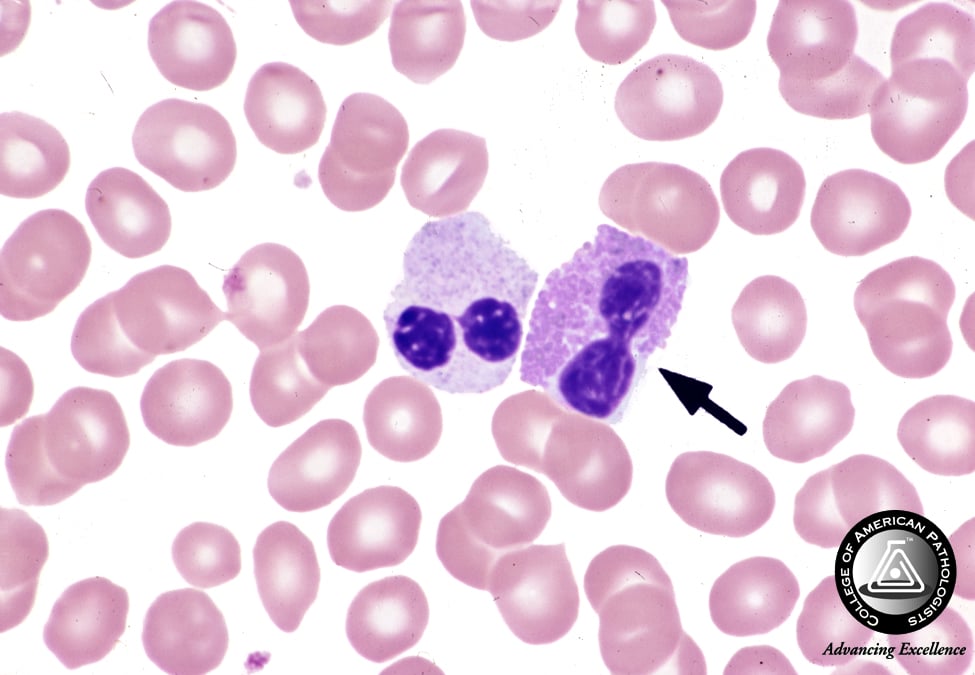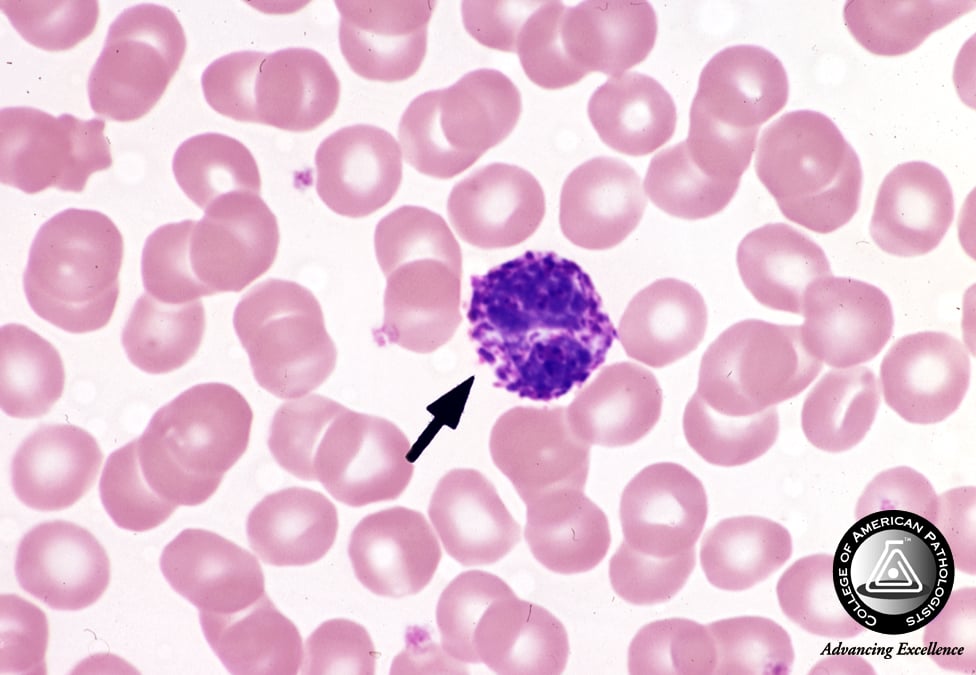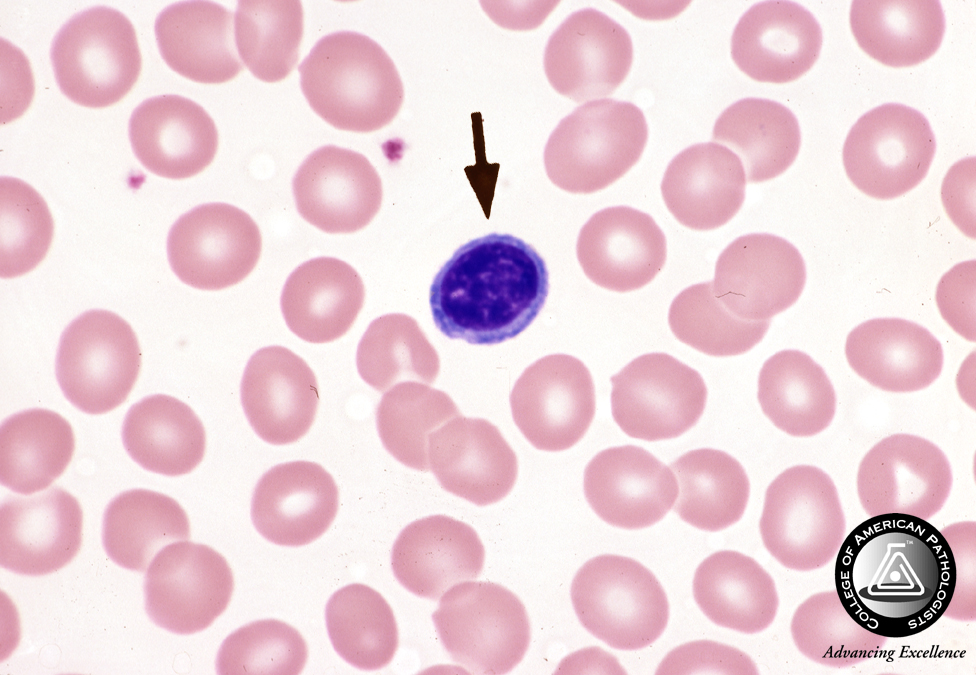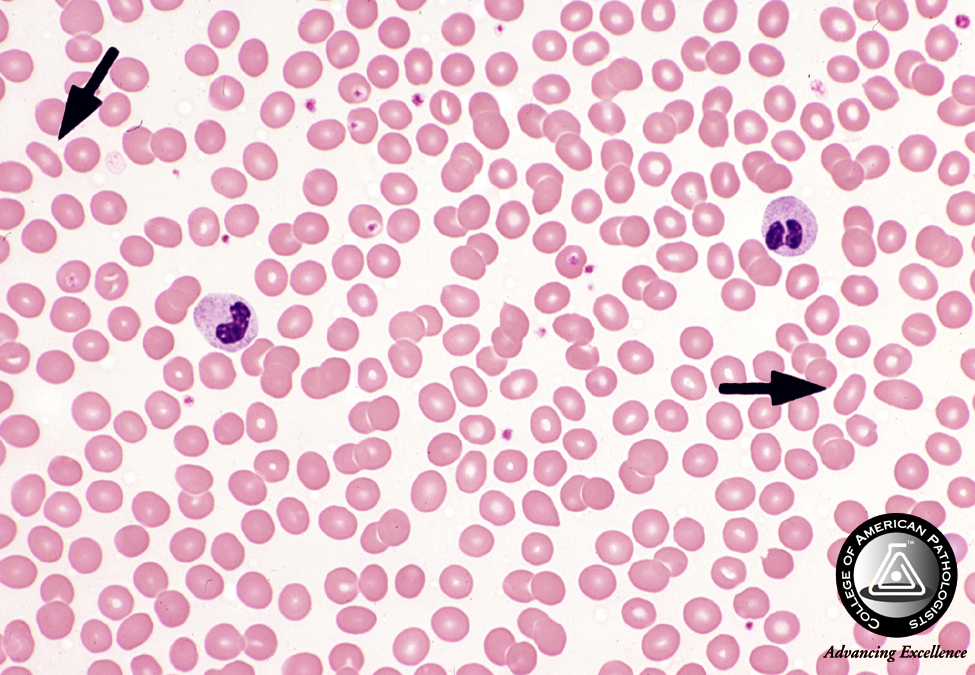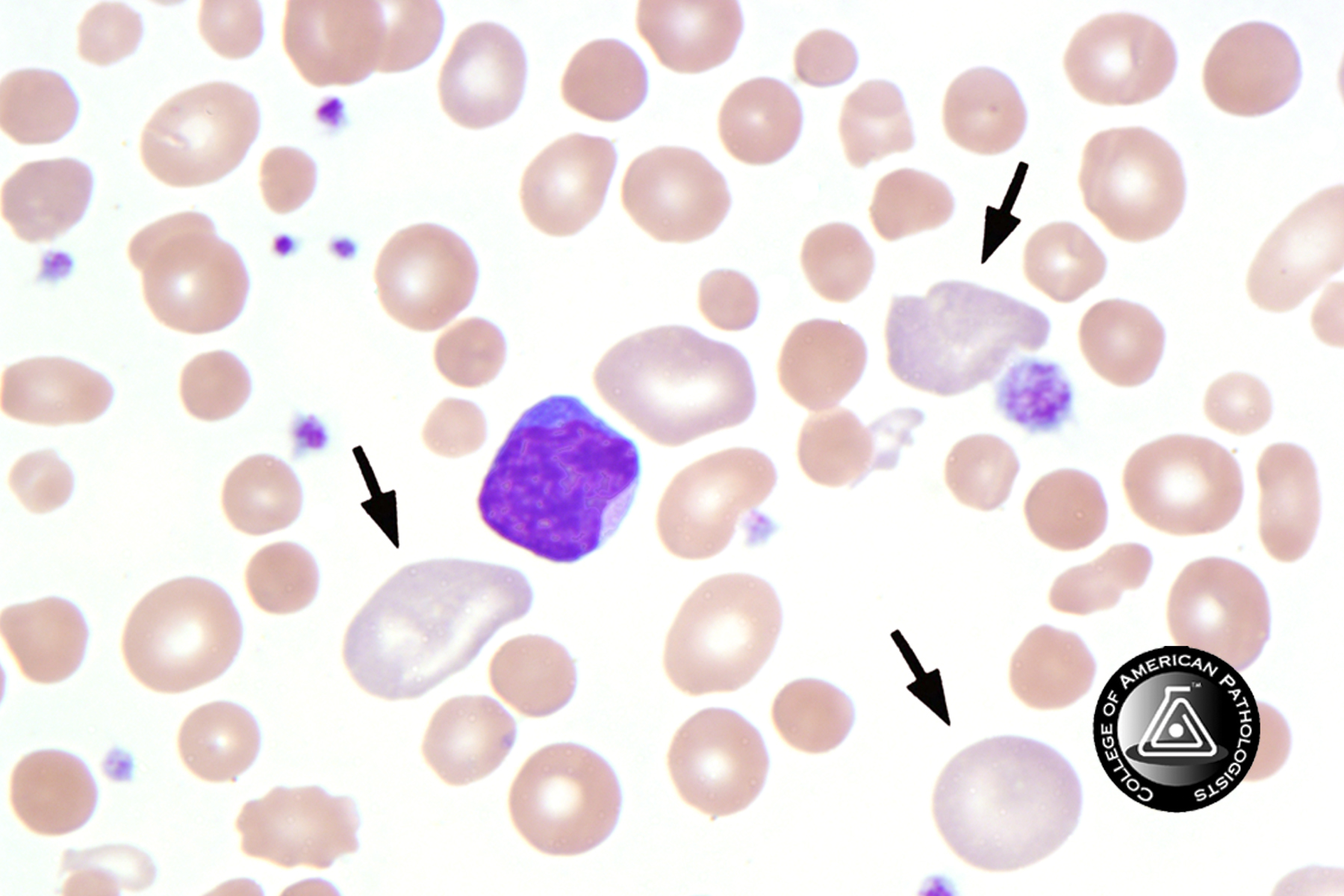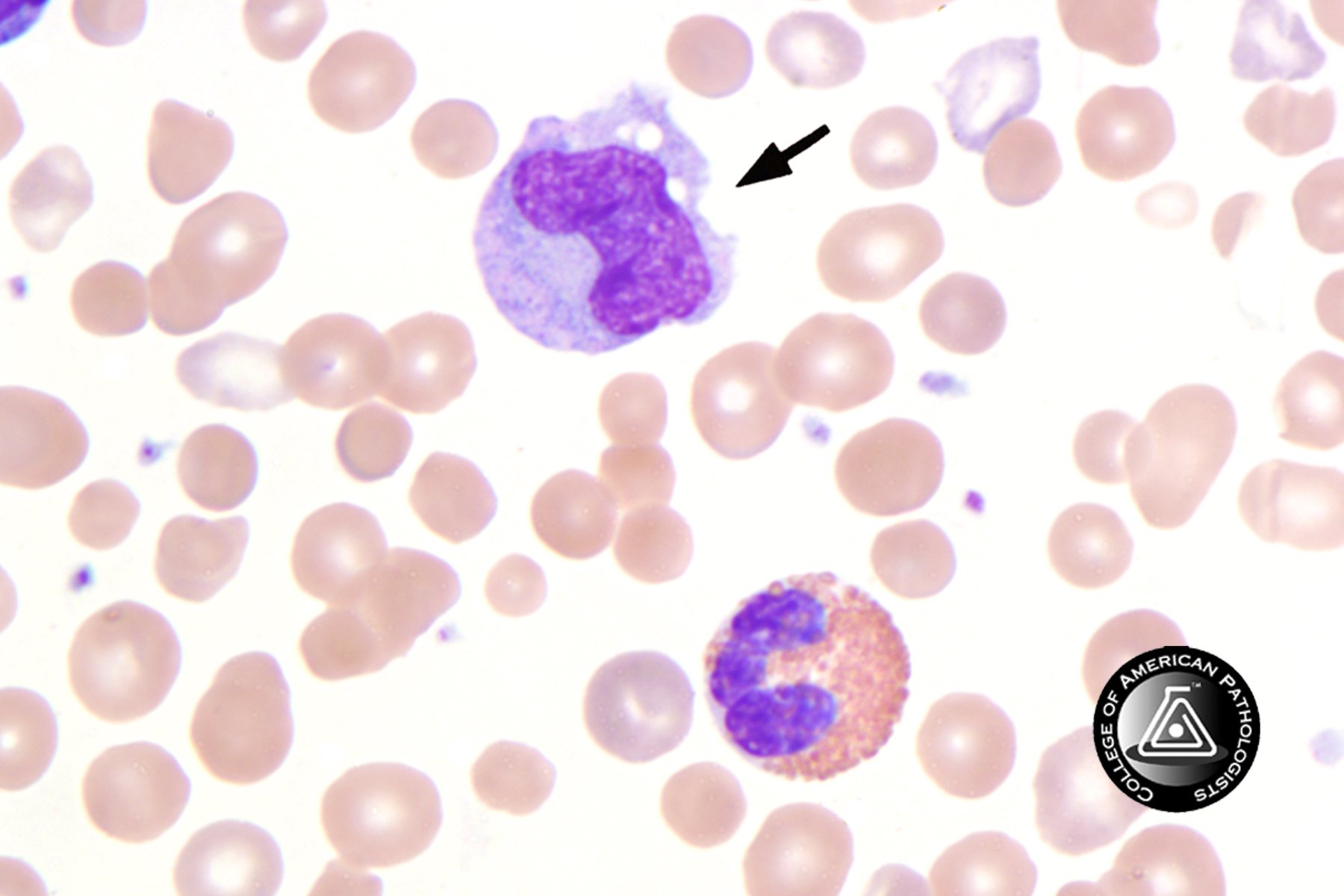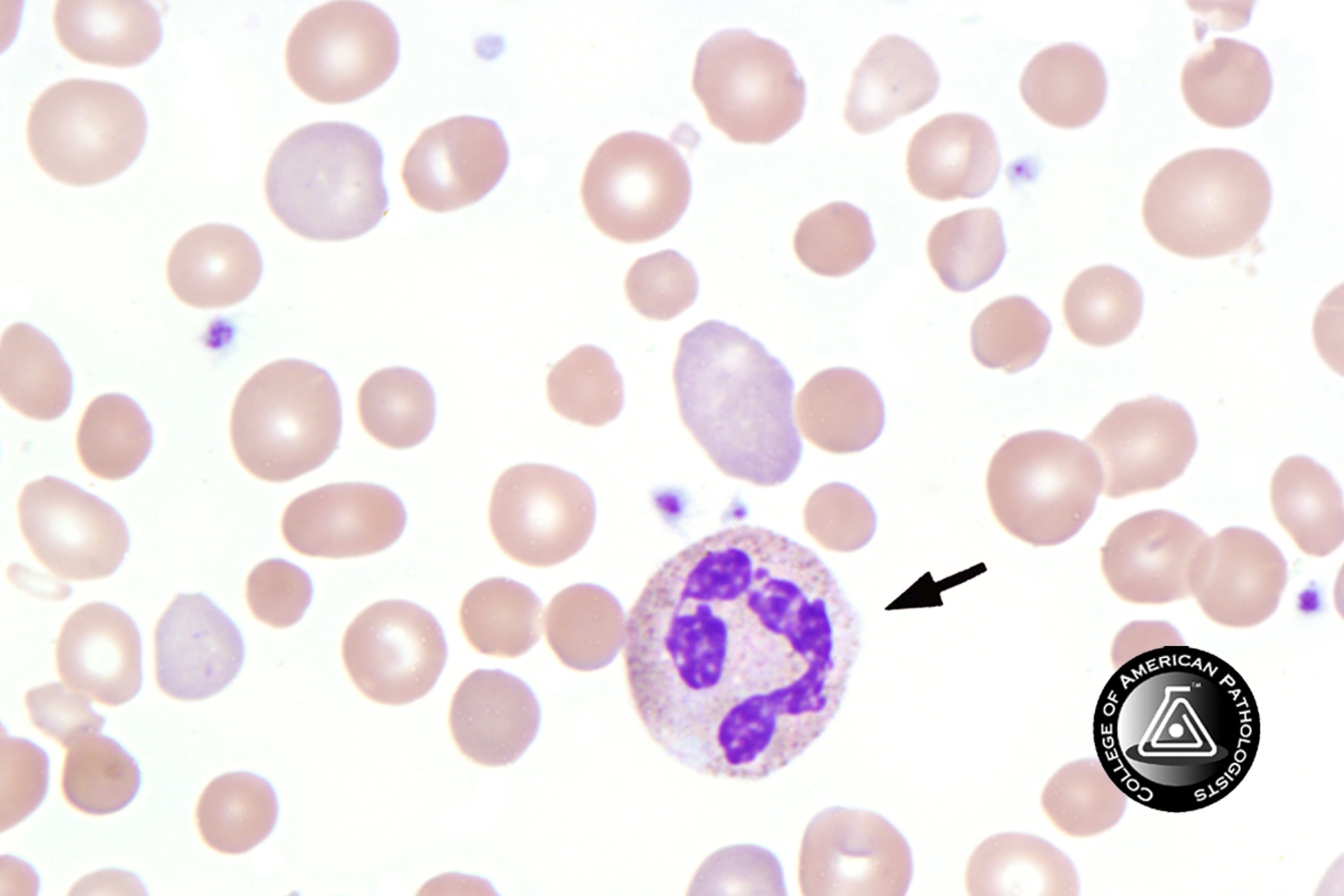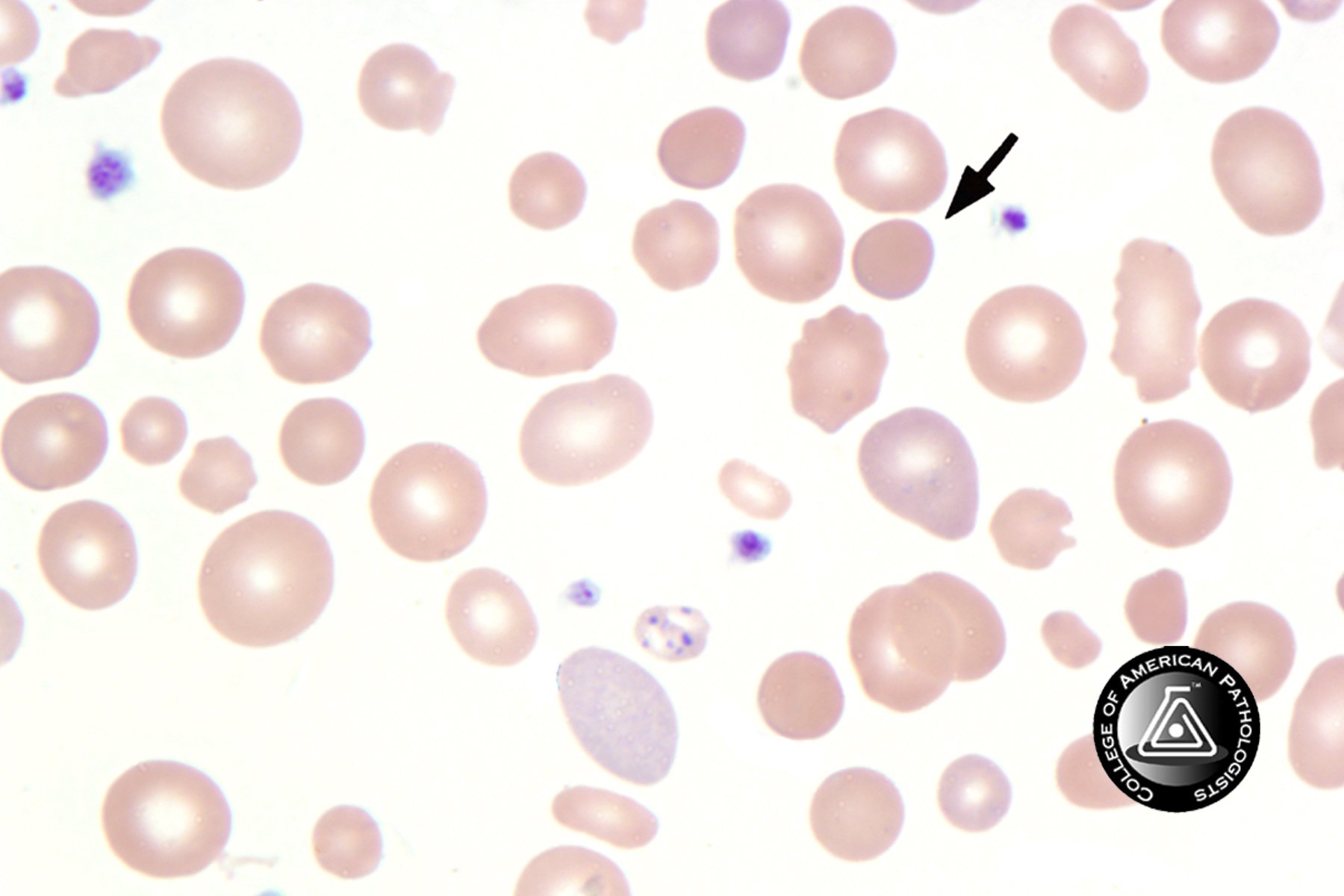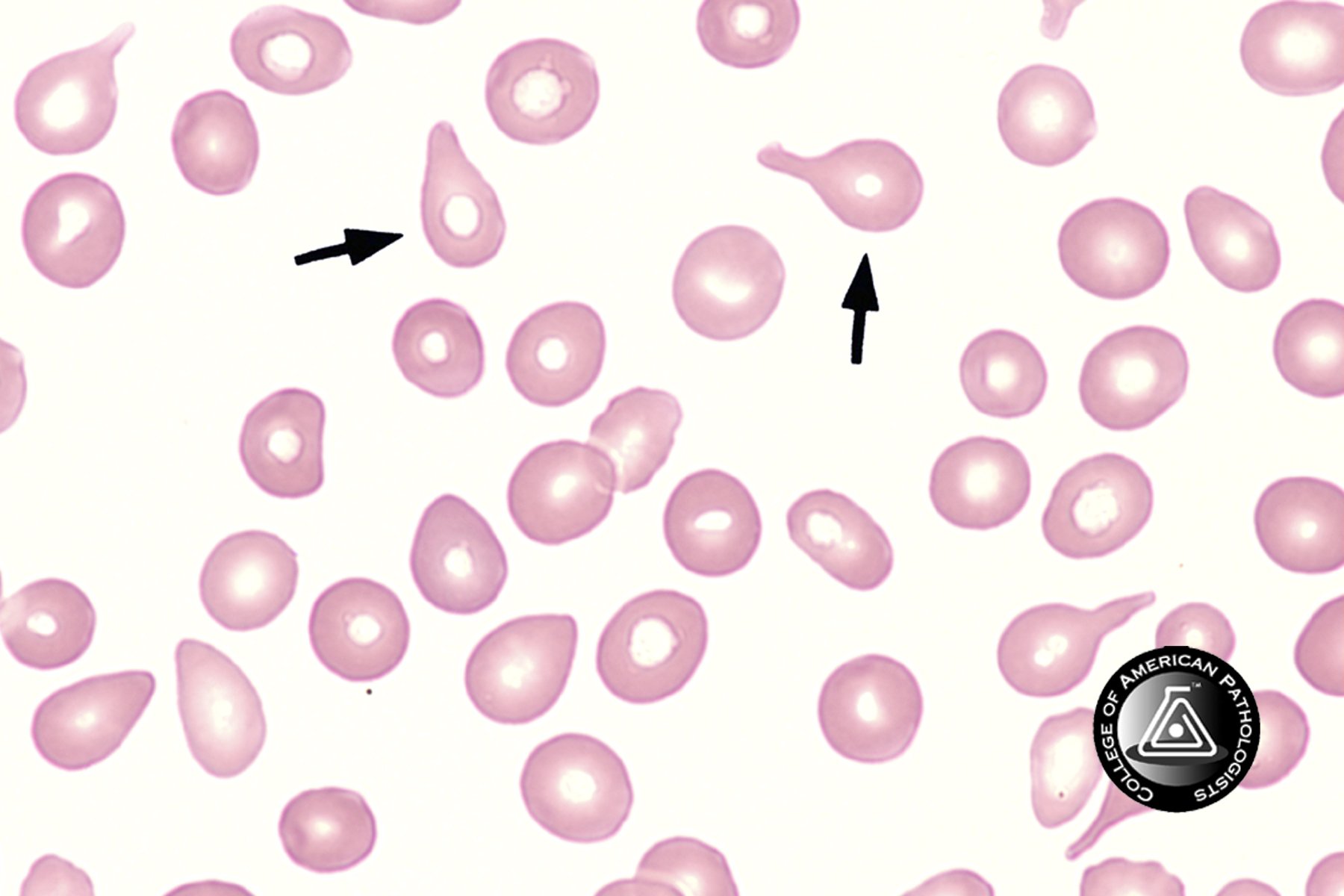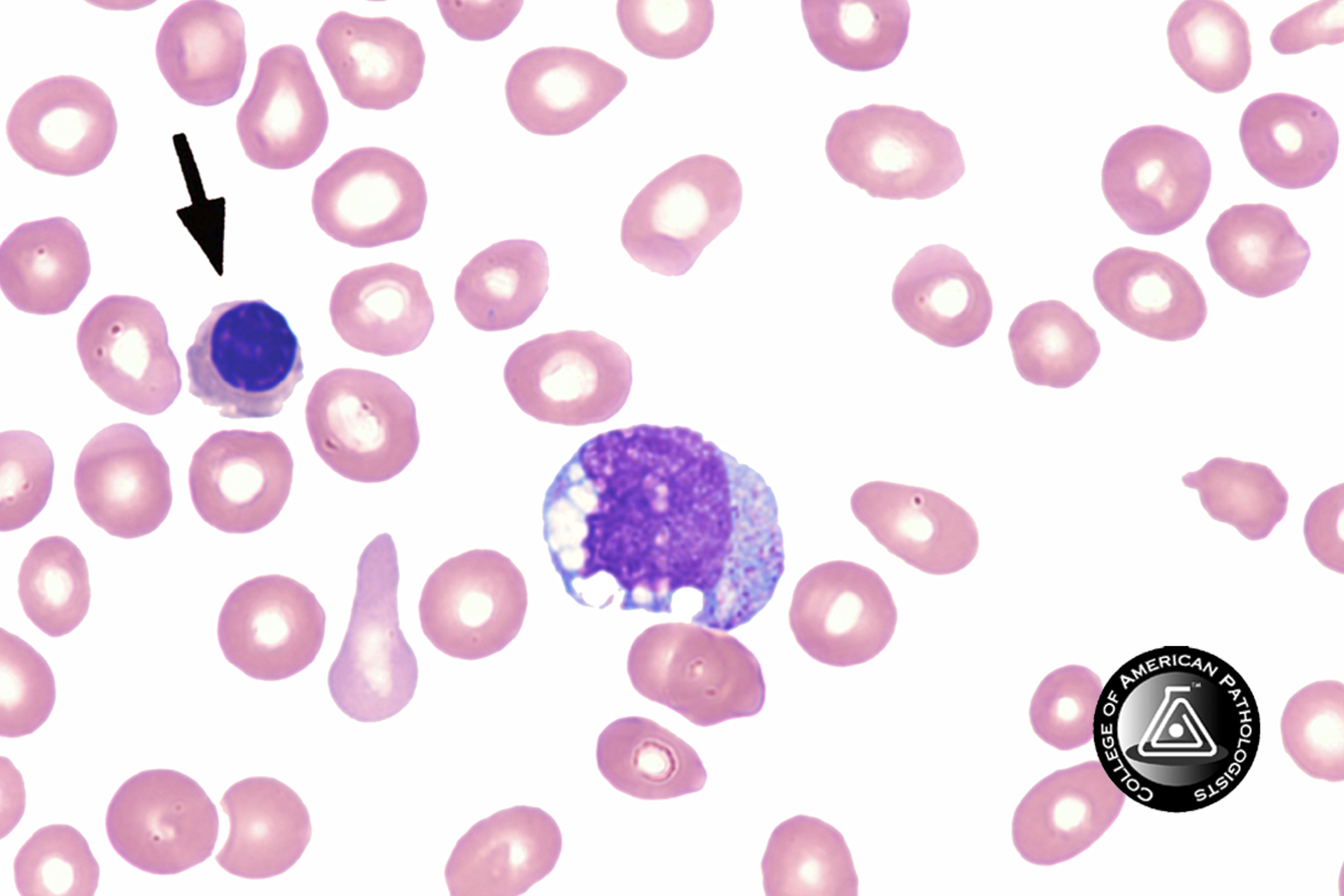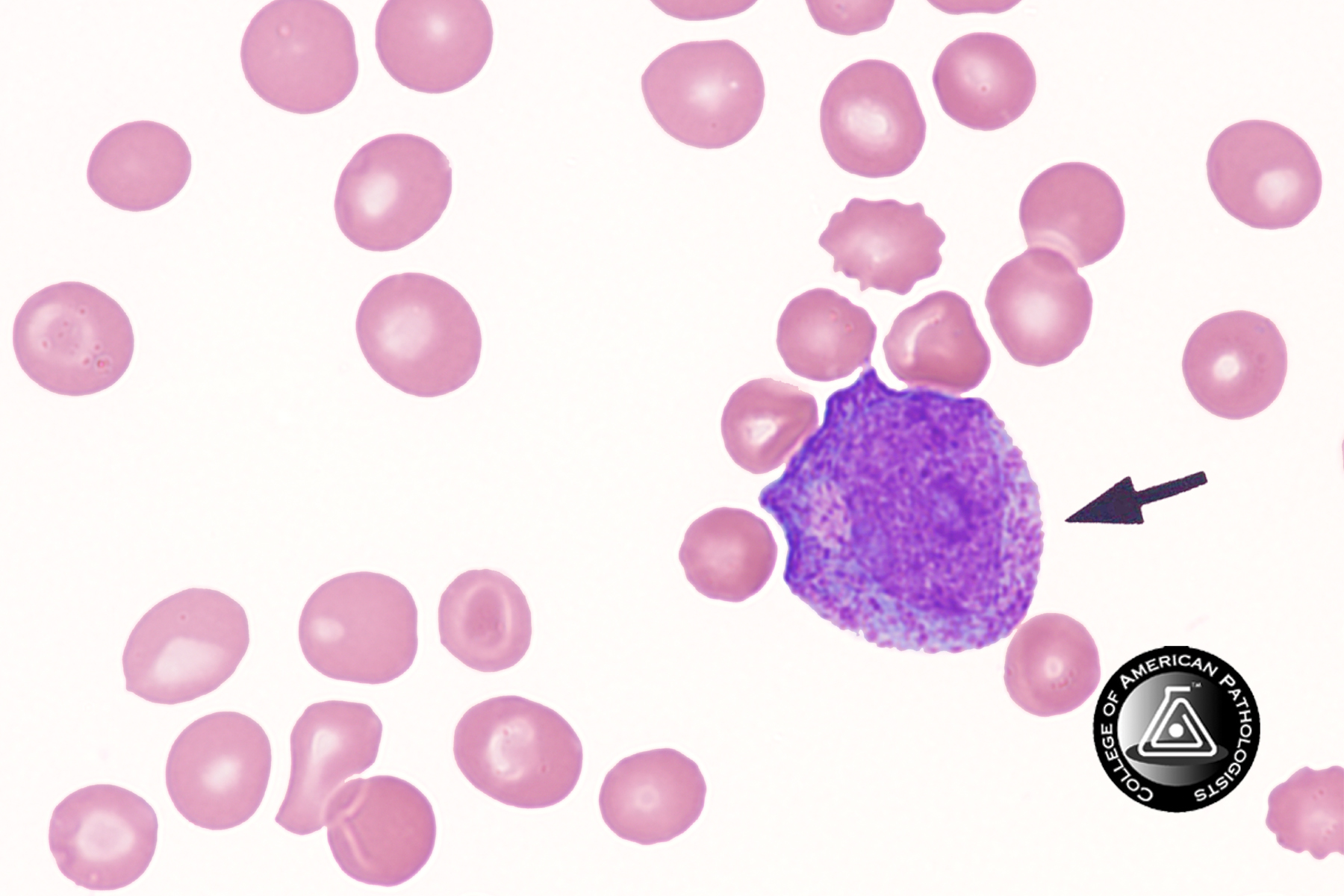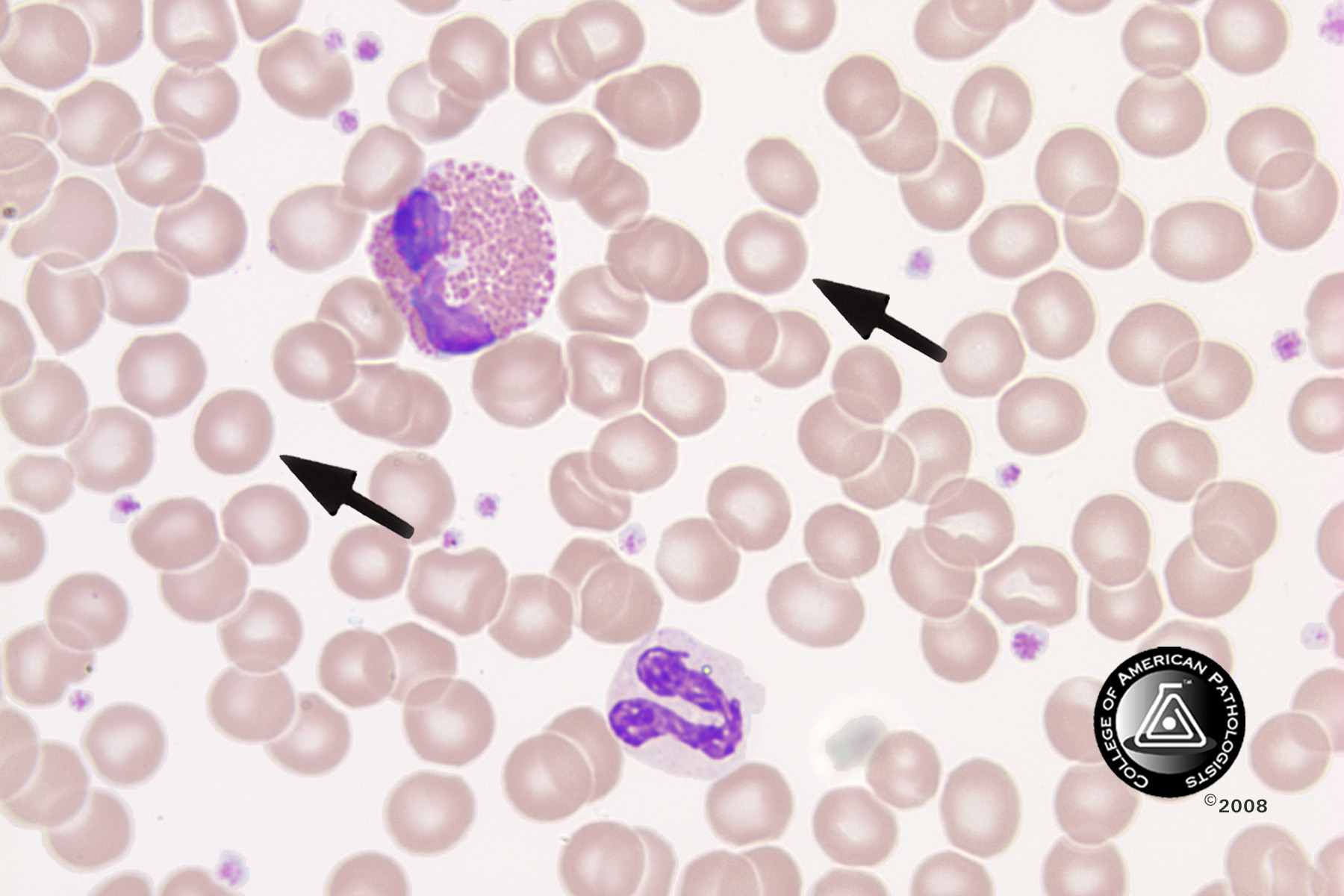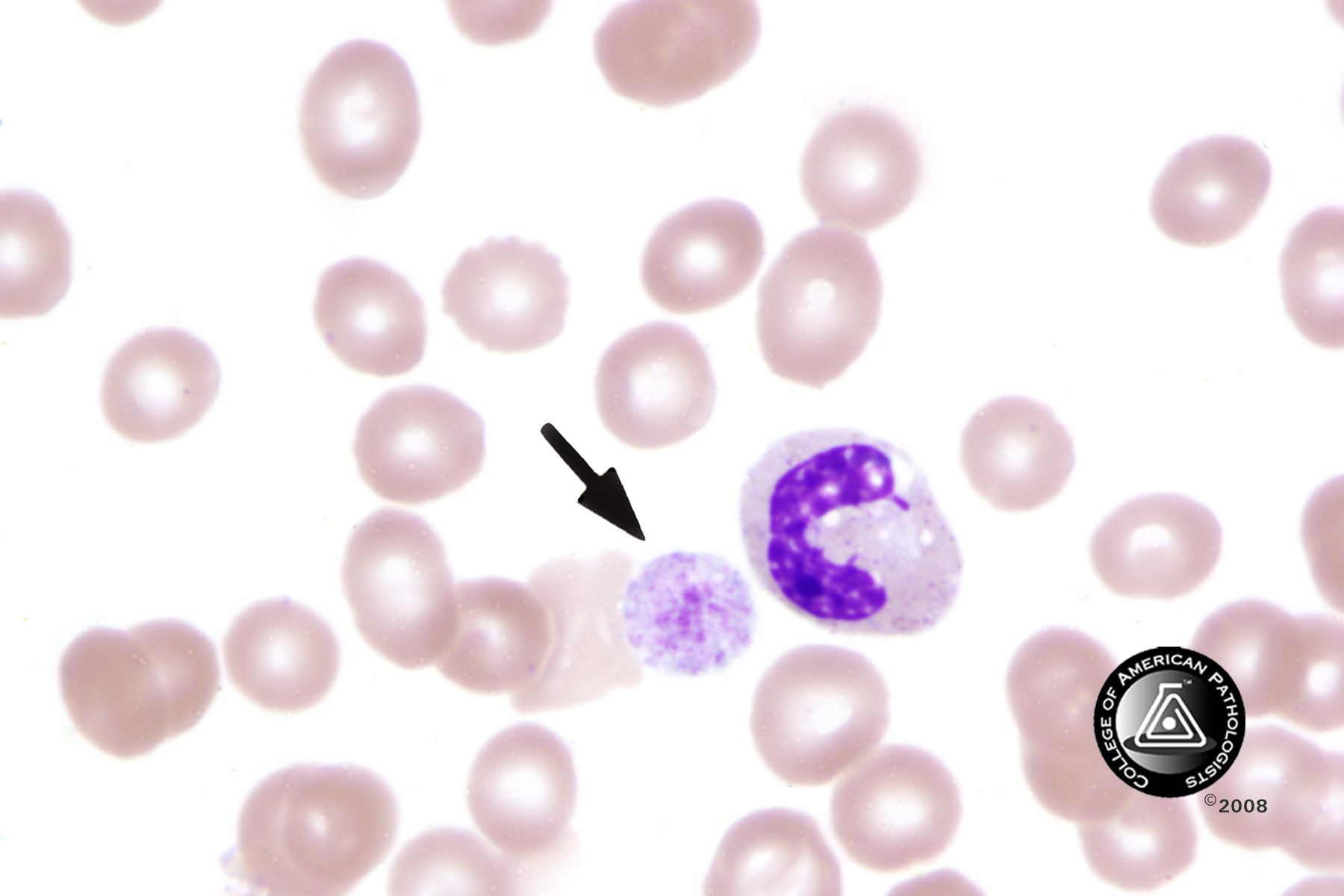Mcfp Hematology Competency Quiz

This quiz is designed to be used with clinical laboratory staff to assess their competency in Hematology. It will be used, in conjunction with observations and check lists, to satisfy regulatory requirements.
- 1.
Identify the cell by the arrow. Pay attention to the granules!
- A.
Basophil
- B.
Eosinophil
- C.
Lymphocyte
- D.
Monocyte
Correct Answer
B. EosinophilExplanation
The correct answer is Eosinophil. Eosinophils are a type of white blood cell that play a role in the immune response to parasitic infections and allergies. They are characterized by the presence of large granules in their cytoplasm, which can be seen in the image. The arrow is pointing to a cell that has these distinct granules, indicating that it is an eosinophil.Rate this question:
-
- 2.
Identify the cell by the arrow.
- A.
Basophil
- B.
Eosinophil
- C.
Lymphocyte
- D.
Monocyte
Correct Answer
A. BasophilExplanation
The cell identified by the arrow is a basophil. Basophils are a type of white blood cell that plays a role in the immune response and allergic reactions. They contain granules that release histamine and other chemicals, which can cause inflammation and attract other immune cells to the site of infection or injury. Basophils are characterized by their dark-staining granules and lobed nucleus, which can often be seen under a microscope.Rate this question:
-
- 3.
Identify the cell by the arrow.
- A.
Basophil
- B.
Eosinophil
- C.
Lymphocyte
- D.
Monocyte
Correct Answer
C. Lymphocyte -
- 4.
Identify the cell by the Arrow.
- A.
Normal RBC
- B.
Ovalocytes or Elliptocyte
- C.
Dacryocyte
- D.
Shistocyte
Correct Answer
B. Ovalocytes or ElliptocyteExplanation
The correct answer is Ovalocytes or Elliptocyte. Ovalocytes or elliptocytes are abnormally shaped red blood cells that have an oval or elliptical shape instead of the normal round shape. This can be seen in conditions such as hereditary elliptocytosis or certain types of anemia. The arrow in the question is pointing to a cell that has an elongated, oval shape, indicating that it is an ovalocyte or elliptocyte.Rate this question:
-
- 5.
Identify the cell by the arrow.
- A.
Shistocyte
- B.
Tear Drop Cell (Dacroycyte)
- C.
Polychromatic RBC
- D.
Monocyte
Correct Answer
C. Polychromatic RBCExplanation
The correct answer is Polychromatic RBC. The arrow is pointing towards a cell that appears to have a bluish-purple color, indicating that it is a polychromatic red blood cell. Polychromatic RBCs are immature red blood cells that have recently been released from the bone marrow. They have a larger size and a bluish color due to the presence of residual RNA. These cells are commonly seen in conditions such as anemia or bone marrow disorders.Rate this question:
-
- 6.
Identify the cell by the arrow.
- A.
Lymph
- B.
Monocyte
- C.
Basophil
- D.
Plasma Cell
Correct Answer
B. Monocyte -
- 7.
Identify the cell by the arrow.
- A.
Monocyte
- B.
Lymphocyte
- C.
Basophil
- D.
Segmented Neutrophil
Correct Answer
D. Segmented NeutrophilExplanation
The cell identified by the arrow is a segmented neutrophil. Neutrophils are a type of white blood cell that play a crucial role in the immune system's response to infection. They are characterized by their segmented nucleus, which gives them their name. Neutrophils are the most abundant type of white blood cell and are known for their ability to engulf and destroy bacteria and other foreign particles. They are also involved in the inflammatory response and can release chemicals to recruit other immune cells to the site of infection.Rate this question:
-
- 8.
Identify the cell by the arrow.
- A.
Normal RBC
- B.
Platelet
- C.
Stomatocyte
- D.
Spherocyte
Correct Answer
D. Spherocyte -
- 9.
Identify the cell by the arrow.
- A.
Tear Drop Cell (Dacryocyte)
- B.
Rouleaux
- C.
Spherocyte
- D.
Target Cell (Codocyte)
Correct Answer
A. Tear Drop Cell (Dacryocyte) -
- 10.
Identify the cell by the arrow.
- A.
Normal RBC
- B.
Lymphocyte
- C.
Nucleated RBC
- D.
Pappenheimer Bodies
Correct Answer
C. Nucleated RBC -
- 11.
Identify the cell by the arrow. Pay attention to the red and purple granules!
- A.
Myeloblast
- B.
Promyelocyte
- C.
Myelocyte
- D.
Metamyelocyte
- E.
Band
Correct Answer
B. PromyelocyteExplanation
The correct answer is "Promyelocyte". Based on the description given in the question, we are asked to identify the cell by the arrow and pay attention to the red and purple granules. By analyzing the options provided, "Promyelocyte" is the only cell type that fits this description. It is a precursor cell in the development of granulocytes, which are characterized by the presence of red and purple granules. Therefore, the cell indicated by the arrow is likely a promyelocyte.Rate this question:
-
- 12.
Identify the cell by the arrow.
- A.
Microcyte
- B.
Normal RBC
- C.
Spherocyte
- D.
Target Cell (Codocyte)
Correct Answer
B. Normal RBCExplanation
The correct answer is "Normal RBC" because the arrow is pointing to a cell that appears round and has a normal size. Microcytes are smaller than normal RBCs, spherocytes are smaller and darker, and target cells have a distinct target-like appearance with a dark center and lighter outer ring. Therefore, the cell in question does not match any of these descriptions and is most likely a normal RBC.Rate this question:
-
- 13.
Identify the cell by the arrow.
- A.
Malarial Parasite
- B.
Normal Platelet
- C.
Giant Platelet
- D.
Osteoclast
Correct Answer
C. Giant PlateletExplanation
The cell identified by the arrow is a giant platelet. This can be determined based on the other options provided. Malarial parasite and osteoclast are not relevant to platelets, while normal platelets are typically smaller in size compared to the cell indicated by the arrow. Therefore, the most appropriate option is a giant platelet.Rate this question:
-
Quiz Review Timeline +
Our quizzes are rigorously reviewed, monitored and continuously updated by our expert board to maintain accuracy, relevance, and timeliness.
-
Current Version
-
Mar 22, 2023Quiz Edited by
ProProfs Editorial Team -
Apr 30, 2009Quiz Created by
Jestes
 Back to top
Back to top



